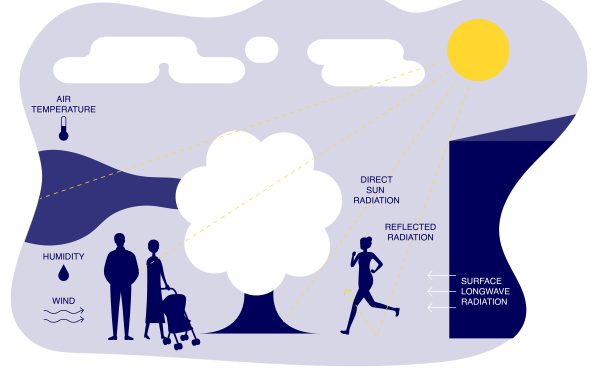In the face of the relentless ratcheting up of the Trump administration’s economic assault on Canada, we’ve seen basically three types of government responses: almost immediate and very specific retaliatory tariffs, long-term and somewhat diffuse pledges to bolster Canada’s internal economy (i.e., maybe an east-west pipeline, ending inter-provincial trade barriers) and localized gestures that feel more demonstrative than substantial.
Case in point: the City of Toronto’s tariff response, approved this week in council, which will direct some procurement away from U.S. bidders while providing a minescule amount of financial relief, in the form of property tax deferrals, for industrial landlords. The average value of these deferrals is under $30,000, and suffice it to say that these temporary tax breaks won’t help any firm that’s just seen a 25% tariff slapped onto 70 or 80% of its gross revenues.
Is there anything else Canadian politicians can do that would benefit urban regions?
The answer is a resounding yes, although the policy moves I have in mind have yet to bob to the surface of the federal election debate.
Consider this: Nature, America’s leading scientific journal, yesterday published a reader’s survey which revealed that a whopping 75% of respondents — 1,608 researchers — were “considering leaving the country following the disruptions to science prompted by the Trump administration.” “The trend was particularly pronounced among early-career researchers,” Nature‘s editors noted, adding that many wanted to relocate “to countries where they already had collaborators, friends, family or familiarity with the language [emphasis added].”
Hello?!?
Are our politicians listening?
The Nature poll, as far as I’ve seen, is the first specific piece of empirical evidence that reveals the American research community’s gutted reaction to the scrubbing of websites, the firing of thousands of government scientists, epic budget cuts at some of the world’s pre-eminent research institutions, and the absurd punishments being meted out by Trump et al to elite universities in the form of withheld federal grants.
Not only are a huge number of U.S. scholars and scientists now unemployed; they also want out, and fast, of a country that is attacking one of its most critical resources: brainpower.
As I noted in the Toronto Star earlier this month, Canada has a generational opportunity to capitalize on a brain gain that could super-charge our university, government and private research sectors. This is the raw material of the innovation economy — a source of energy that delivers far more in terms of high-productivity jobs, export opportunities and quality of life than the extraction of oil and rocks, or the free movement of regional wines across the country.
The Greater Toronto and Hamilton Area, in particular, could benefit hugely from America’s imminent brain drain thanks to the presence of six universities, several community colleges, an extended network of tech incubators and accelerators, the University of Toronto’s extensive teaching hospital network, a burgeoning bio-medical research sector, Mississauga’s pharmaceutical and IT clusters, and on and on.
The question is, will we have the smarts to scoop up the $1,000 bill that’s just lying on the sidewalk?
The answer lies largely with the federal government, which is why we need to see a much more robust discussion of the opportunity on the campaign trail. As of yet, none of the major parties have rolled out their innovation, immigration or higher-education platforms; all of these policy domains, however, will need to be marshalled in order to attract talent from south of the border.
What would these measures look like?
First, and most obviously, fast-tracking immigration applications from U.S.-based researchers and graduate students, something Canada did during Trump 1.0.
Second, while Ottawa earmarks about $4 billion a year to the four national research councils, that figure should be increased immediately, with granting program tweaks designed to expand research opportunities for Canadian grad students and scholars while also attracting more U.S. scientists to collaborate with Canadian counterparts.
Third, the federal government since 2000 has operated the Canada Research Chair program, which aims to “attract and retain” world class researchers. Its budget? Just $311 million a year, up from $195 million in 2020. Now recall that the Liberal government, in partnership with the Province of Ontario, just two years ago ploughed billions into the coffers of a few EV battery giga-plants, primarily as a subsidy to encourage them to build factories here, which are now very obviously threatened. The differential — an order of magnitude — clearly signals where our priorities lie.
Finally, Ottawa could set up a fund that matches philanthropic donations to university or teaching hospital research infrastructure — wet labs, testing equipment, etc. — as a means of ensuring that newcomers drawn here by these other inducements have the resources they need to carry out their work.
None of these moves exclusively benefits the Greater Toronto region, obviously, but that’s fine. Canada has numerous large urban areas that are anchored by major universities and their research arms, and all of these cities — and their residents — will benefit from the Trump-induced brain gain.
Given Pierre Poilievre’s outlook and his shrill anti-elitist rhetoric, I’d be shocked if he had any appreciation of the opportunity staring us in the face. Not so with Liberal leader Mark Carney, a PhD whose technocratic career is steeped in data analysis and informed by economic research, nor that of his Quebec lieutenant Francois Champagne, a former tech industry executive who spent several years heading up Ottawa’s innovation, science and economic development portfolio.
The Liberals need to begin talking about how to open the door and throw down the welcome mat to U.S. researchers as soon as they can — not only to send a signal to all the frustrated scientists stateside, but also to let angry Canadians know that we can answer Trumpfare with more than just retaliatory tariffs.






2 comments
On the surface it seems like a good idea to entice graduate students and scientists to Canada, but as the parent of a child with a doctorate in STEM disciplines who has a precarious job as as a university professor, I worry about the consequences for our existing graduate students and researchers.
Insofar as the Harper Cons (of which Poilievre was, granted, a forgettable participant) actively shut down research and chased the science community out of the country, I cannot imagine the current lot of them being any more interested in them now.
So basically, if we are hoping to benefit from actions in the US that mirror what we previously went through, it’s ’anybody but Poilievre’.